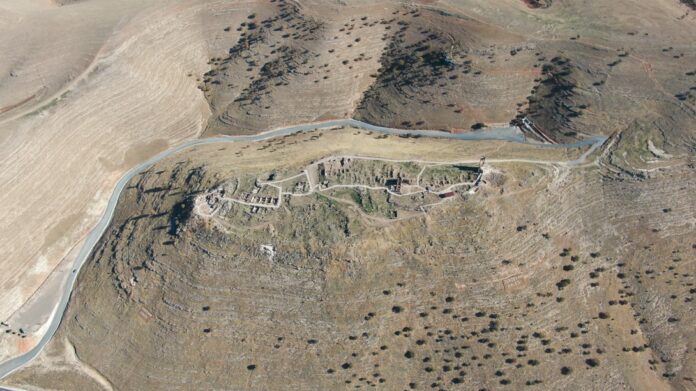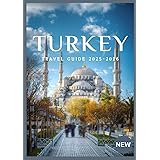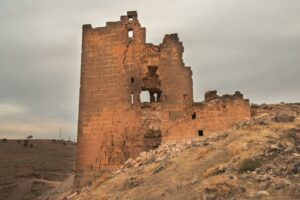
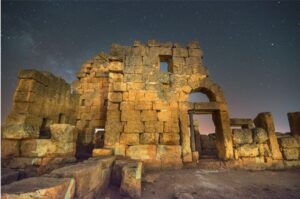
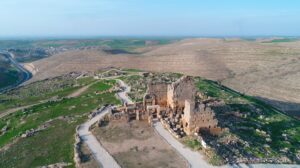
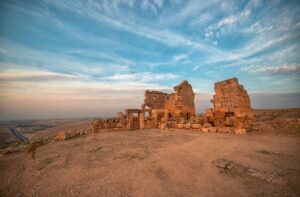
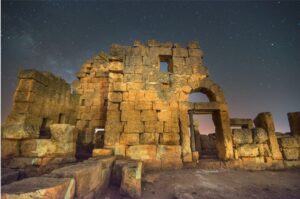
Interview with Assoc. Prof Dr. Aytaç Coşkun by Levent Ağaoğlu, 11-12 September 2021
© Copyright photo by Assoc.Prof Dr. Aytaç Coşkun
LA: Were there similar Roman forts east of Zerzevan Castle?
LA: Was Zerzevan Castle located on the border of the Roman Empire?
LA: You said the cult of Mithras is of Persian origin, is there an Indian influence as well?
LA: It’s important that the excavations are done by ourselves. There are no westerners.
LA: Within the Roman Empire, there are both London and Zerzevan castles. The European Union has divided this unity of thousands of years. it is significant
LA: The Orkhon Inscriptions also suffered the same fate. He was silent between 740-1886, his language was resolved after 1150 years.
LA: Your presentation was very impressive. I visited your university in 2018.
AD: Thank you very much for your interest. Thank you for inviting me. I came from Ankara for 1 year in 2005, it’s been 16 years. We look forward to seeing you again, of course, both to Diyarbakır and to Zerzevan Castle.
LA: Thank you very much
LA: It’s important that the excavations are done by ourselves. There are no westerners. There are both London and Zerzevan castles within the Roman Empire. The European Union has divided this unity of thousands of years. It is significant. The Orkhon Inscriptions also shared the same fate. He was silent between 740-1886, his language was resolved after 1150 years.
AD: I am very glad that you liked the presentation and your interest. We have made many publications in Turkish and English about the Zerzevan Castle. Of course, I can send an introduction letter in English. It is about both Zerzevan Castle and Mithras Temple.
LA: I would be very happy and satisfied. Thanks.
LA: I would like to publish your new articles about the new developments on Zerzevan Castle. My site is entirely in English and is progressing rapidly.
AD: Of course. A new article about the cult of Mithras in Zerzevan has been published in Turkish. This article can be translated into English and published on your site.
LA: I felt the grandeur of Rome and Sassanid in your presentation.
AD: They are constantly at war in this region.
LA: Malatya, which I know, was the border garrison of Rome, and people along the border are always combative in their struggle for life, they do not give up.
AD: Gümüşhane, Malatya, Gaziantep were the real eastern border of Rome, we are in the buffer zone, a region in constant war. Those magnificent rich cities like Zeugma owe their existence to this region.
LA: If the buffer zone is, yes, thousands of years of war.
LA: Rome was born in Italy, continued in Turkey and finished in Turkey again. The end date is actually 1922. Ottoman was the continuation of Roman.
LA: The Murat Pasha Mosque in Aksaray in Istanbul was built in the name of the person who changed his name to Murat as heir to the last Roman emperor who converted to Islam.
LA: So, Eastern Anatolia was actually under Iranian rule throughout the Roman centuries, we took it from Iran and Turkified it. So this is the root of Iran’s hostility.
AD: Southeast was under Roman rule rather than Sassanid. Settlement in Anatolia starts from the Persian period, in the years 546-334 BC, Persians dominated Anatolia for 212 years. The Parthians and Sassanids are the continuation of the Persians. The Parthians and Sassanids are also trying to hold more eastern and southeastern Anatolia, but they are not fully settled in the region like Rome.
LA: Isn’t the Roman-Sasanian border between Antep and Urfa?
LA: Then the most permanent civilization in Anatolia is Rome.
AD: The original border is west of the Euphrates, but the buffer zone of Rome in Southeastern Anatolia is still in Roman hands.
LA: It is interesting that Rome creates a buffer zone within itself.
AD: Its easternmost border is Diyarbakır- Mardin- Syria line.
AD: Diyarbakir and Mardin are in Rome. Amida, Zerzevan in Diyarbakir, the border region with the strongest fortifications, which is the most warring; Dara in Mardin.
LA: Did Rome build the Diyarbakır city walls?
AD: It was built by Eastern Rome around 330 AD. Of course, it has undergone many repairs later on.
LA: When Constantine made Istanbul the capital in 330 AD, it means that the city walls were being built in Diyarbakir simultaneously.
AD: The same periods were also called Constantiniye in Diyarbakir at that time. Some sources also say that the city walls were built around 348.
LA: Shortly after visiting Beijing, the capital of China, I also visited Diyarbakir. The subject that intrigued me was the stones of the old Stone Houses in the center of Beijing and the walls of Diyarbakir, the same dark gray color, that means they are locally found.
AD: Basalt is a volcanic rock. Diyarbakir is built on a basalt plateau. The area where Zerzevan is located is limestone, therefore limestone was used there as well.
LA: The fact that Istanbul and Diyarbakir are surrounded by walls shows the great importance that Rome attaches to Defense.

